Tata Nano (Old)
Delivering a spacious and efficient car for around a lakh of rupees may be one of the most difficult challenges of our time. Has Tata succeeded in walking the engineering tightrope, or is the Nano not quite enough car?
Published on Aug 13, 2009 07:00:00 AM
56,179 Views
Follow us on
Delivering a spacious and efficient car for around a lakh of rupees may be one of the most difficult challenges of our time. Has Tata succeeded in walking the engineering tightrope, or is the Nano not quite enough car?
The Nano’s been the most anticipated car in our short automotive history and could arguably be the most important too. After its rock-star reception at the Delhi Auto Expo over a year ago, the Nano has had a tough gestation period. It lost its home in Singur and until the new factory is built in Sanand, it will be produced in limited numbers in a makeshift facility within Tata Motors’ Pantnagar plant in Uttarakhand. The ensuing delay has only created more anticipation and excitement and questions have been flying thick and fast. Does Tata’s little Nano drive and feel like a real car? Can it provide the comfort, performance and security expected of it? Or has Tata’s self-imposed price target of one lakh made it too much of a compromise? After a full day of driving through Pune city, on the highway and on rural back roads, we have the answers.
WHAT MAKES IT TICK
As cute as a cartoon caricature and desperately loveable, the Nano gets more attention than a supercar parade. More than half the battle is won if something is both very affordable and desirable, and the Nano ticks both boxes. The smiley face, those soft ‘eyes’, and the exaggerated round-shaped roof all add to the Nano’s undeniable charm. Not only is the Nano very cute, it’s also cherubic and appealing especially to ladies. What also looks good is the tipped-forward stance, the air inlets behind the rear doors, and the tightly formed rear section. The vertical tail-lights and rear section have that Tata stamp to them and the meshed section of the bumper, that allows for a fair amount of venting from the rear of the car, has a neat inverted ‘V’ cut into it to accommodate the centre exhaust.
What you can’t ignore, however, are the almost dinner plate-sized wheels, whose dinky size is exaggerated on a car this tall. The 12-inch rims wouldn’t look out of place on a three-wheeler, and the spindly 135 section front tyre looks like it has been pinched off a scooter. The larger 155 rear tyre is much better though. Why use two different tyre sizes? It was the only way to make the Nano stable, something which we will come to later.
Because of its odd shape, the Nano uses a combination of a monocoque chassis and space frame with supports. Two long-members and three cross-members are integrated into the design and this allows it to be stiff, 20 percent lighter and tall at the same time. Tata engineers have also used a ribbed roof to provide more strength, something they claim is essential.
With almost 60 percent of the weight placed over the rear wheels, despite the battery and fuel tanks being placed under the front seats, a capable suspension system is a must. And the Nano doesn’t just use an all-independent suspension, but a pretty sophisticated one as well. The front MacPherson strut uses a lower A-arm and the independent rear uses semi- trailing arms. There are no anti-roll bars, disc brakes or power steering though. The Nano weighs only 600kg and as a result can manage without them. Also chopped at the altar of economy is the rear-opening hatch – there isn’t one and this may prove to be too much of an irritant. Also missing is a second wiper and left-side rear view mirror. Access to the engine bay is also quite rudimentary; you need to unscrew six butterfly nuts and lift off the engine cover just to top up the radiator.
The 624cc, twin-cylinder, all-aluminium motor is extremely compact and looks like you could actually pick it up, place it in your bag and walk home. It’s a straightforward single overhead cam, two-valve unit that produces 35bhp, almost as much as the Maruti 800. A compact four-speed gearbox drives the rear wheels. The engine is mounted low behind the rear wheels and the ‘boot’ above it can only hold a paltry 80 litres. That means the rest of the car is maximised for passengers.
SIZE DOWN, SPACE UP
Getting in and out of the Nano is easier than in an S-class and that’s no exaggeration. The doors open wide and the high seats allow you to slide onto them with the utmost ease. For a car with such a small footprint, the generous amount of interior space is unbelievable and possibly the single greatest achievement of the Nano, after its price.
With no engine in front, the Nano has deep wells that allows front seat passengers to fully stretch out their legs. There’s plenty of legroom even for six-footers. Both front seats are identical and this means the passenger has to adjust the angle of the backrest from near his right hip, just like the driver – a smart money-saving trick. The seats, however, are a bit hard, flat and offer no bolstering or lateral support, and in a car with significant body roll, this makes you lunge for the grab handle.
Nevertheless, comfort after a whole day of driving proved to be surprisingly good but long hours behind the wheel also revealed that the steering was a touch too low. After the high-set wheel on the Indica, Tata has taken it to the other extreme on the Nano!
What is impressive is the seat fabrics, which are a huge improvement over what the Auto Expo Nanos came with. Also different are the head restraints, which now have a cut-out that add to the airy feeling of the cabin.
The layout of the dash is unique. A bulging central console with a high-mounted speedometer and digital fuel gauge and odometer take centre stage. While the slot for the stereo exists, we saw no obvious speaker enclosures, which means you may have to carve out some space.
On either side of the central console are some very cleverly designed, scooped-out sections. Instead of a regular dash top that actually has little functional value, you can throw all sorts of personal belongings into these large bowl-like cradles.
There are lots of bits and pieces on the inside that make the Nano feel like a proper car. Armrests, door pockets and cupholders are small conveniences but they all add up. The LX version comes equipped with front power windows but the buttons are awkwardly placed.
We were quite impressed by the quality of the dashboard, the steering wheel and gear lever. Even the cladding on the inner A-pillar looked good. The buttons, switches and the vents feel quite flimsy but at this price you really shouldn’t expect better. What did stick out is the very slim and crumpled floor carpet that worked itself loose.
Rear seat comfort, again, is simply unreal, and good enough to have yourself chauffeured — imagine that! The seat height is very good, headroom fantastic, good underthigh support and not much to complain about the backrest either. However, the metal bar (for structural stiffness) that runs in front of the rear passenger’s shins and the lack of three-point rear seatbelts are indications that safety has been sacrificed.
The air-con, standard in the LX and CX versions, provided decent cooling for the front passengers but the small 60cc rotary compressor (a more efficient scroll-type couldn’t be used) struggles to keep the rear passengers cool when it’s really hot. Making it worse is the heat emanating from the rear-mounted engine which seeps through the insulation.
A small engine and large cabin were always going to make effective air-conditioning a challenge. It’s a problem that has plagued the Maruti 800 too.
BORN TO RUN
Turn the key and the Nano fires with a muffled ‘pud, pud, pud’ and doesn’t make an autorickshaw-like racket many had said it would. The twin-cylinder motor has been provided with a unique single balancer shaft to smoothen out the unbalanced blows, but there is some vibration inside the cabin, especially in the doors. The exhaust note turns thrummy and a bit gruff when the twin is revved. Still, the motor isn’t obtrusive and painful. Sounding more like a twin-cylinder motorcycle than a car, it smoothens up somewhat as you climb up the rev band. And you soon get used to it. We would have liked the engine to be smoother and quieter, and with less road noise too but it’s far from being unacceptable.
The ultra-light clutch makes it easy to move off but you do need to use a few more revs than initially planned. The mid-range is pretty good but you quickly realise how short the gearing is, which is further exaggerated by the very conservative 5600rpm rev limit. Just as the engine is getting into its stride, you are quickly up against the limiter, especially in first and second gear. This can be a bit frustrating because there’s a surge in power for the last 200rpm before the engine is abruptly cut off. We feel Tata engineers should have allowed it to rev to 6000rpm to make full use of the engine’s power band. However, in the interests of fuel economy and reliability, revs have been curtailed. The other problem is the big gap between third and fourth gear ratios. A five-speed ’box with closer ratios would have made far better use of the limited power and torque.
However, you quickly learn to stay in the engine’s mid-range where performance is sprightly enough. The Nano has enough pep, especially in the closer-stacked lower gears, and progress in city traffic is quite good. Keeping up and even dodging traffic (from cars keen to get a closer look at the Nano) was easy. Tata engineers must be complimented for the willing way in which the Nano scoots around town. It never feels like hard work, except on steep inclines, and the crisp shift action (better than an Indica’s) of the four-speed gearbox surprised us.
The Nano gets to 60kph in 9.1 seconds; to put that in perspective, the Maruti 800 is about a second quicker, which in the real world isn’t much. The gap to the 800 further widens at 80kph and at 100kph, the Nano, which takes a very leisurely 29.7sec, is 3.7sec adrift. The Nano then hits its speed limiter at 106kph as recorded by our V-Box. You get a warning light on the dash and the injectors cut fuel supply and hence power. However, the Nano can cruise a smidgen below its max speed all day long.
As can be imagined, the Nano isn’t the perfect car for single-lane highways where you need to overtake with oncoming traffic. Passing faster traffic is generally out of the question, and you need to plan overtaking manoeuvres even if your victims are slower trucks. And you always feel like you are wringing the motor’s neck. What doesn’t help is the Nano’s large frontal area, a downside of the car’s space-efficient styling which creates lots of drag. Factor in the 15-litre fuel tank and crossing long distances will become a fuel-hopping exercise. There’s no getting away from the fact that the Nano is better suited to the city.
EASY SIPPER
The Nano’s fuel efficiency is the next most important thing after the price, perhaps even more important. Unfortunately, we did not get a chance to put it through our standard fuel consumption tests but managed to sneak in some figures which were impressive. During our flat-out testing between top-ups, we achieved what we call our worst figure of 13.5kpl, which is incredible when you consider that an i10 or an A-star are likely to drop to single digits for the same cycle. The official ARAI figure is 23.4kpl but in the real world we expect 18-20kpl. While our figures are based on conjecture, what there can be no doubt about is that this is the most fuel-efficient car in the country. Period.
GENERAL DYNAMICS
As we steered the Nano out onto public roads and especially onto some really bad patches of tarmac, we mentally braced ourselves for a really rough ride. But again, the Nano surprised us. You soon forget you are driving a micro car and the sense of stability (no mean achievement with a weight bias to the rear) is terrific. Of course, with a car that has a dinky wheelbase of 2.2 metres, there is bobbing and pitching over rough surfaces but it’s something owners can easily live with. But after driving a cumulative distance of 400km in two cars, we all came away with the feeling that the Nano can tackle the worst of Indian roads.
The short overhangs and 180mm ground clearance give it off-road credentials like few other hatchbacks. Potholes, broken tarmac, ditches and all that rural India can throw under the Nano’s wheels are tackled with aplomb. You do occasionally fear for the integrity of the small wheels as they thud through bad patches but the long travel suspension and the robust, stiff chassis give you a lot of reassurance.
On the highway, the Nano’s straight-line stability is terrific and that’s sure to give first-time drivers a lot of confidence. The steering is well weighted and quite responsive, except for some excessive play around the straight-ahead position. You can drive the car with only your fingertips at speed and the car never feels loose or flighty. We didn’t really miss power steering except when parking at very low speeds but the Nano’s incredible turning radius of just eight metres makes three-point turns a rare occurrence — you can do a U-turn on pretty much any road.
Concerned about the stability of a rear-engined, rear-drive car, Tata engineers have dialed in plenty of understeer. It’s a wise decision as many Nano owners will be inexperienced drivers. The only way to control the tail from stepping out in extreme situations was by giving the rear tyres more grip than the front – hence the different tyre sizes. The narrow front tyres lose grip first and the nose ploughs on straight, as it should. Rear-engined cars that allow oversteer can sometimes become very tricky to handle at the limit, especially in the wet, and Tata has done well to stay away from that problem.
The set-up is similar to that of the Smart microcar, but enthusiastic drivers will wish for better front end grip. For our cornering photographs, we tried as hard as possible to get the tail to step out but it was always the front tyres that gave up the fight. When pushed hard, there is lots of body roll but, like a double-decker bus, you never feel you’re going to keel over.
Despite our skepticism, the drum brakes all round also performed pretty well. This LX version comes equipped with a servo, and that makes the pedal a touch spongy initially, but stopping power and stopping distances tested were pretty good.
FIRST VERDICT
In the end, the big question about the Nano being a proper car is actually quite easy to answer. It’s not a toy or an autorickshaw with a fourth wheel as many skeptics believed. It’s a credible car that does the job brilliantly for its target customers and in the process trounces much more expensive cars in areas like passenger space. The Nano’s not perfect. Owners will want more power, miss the practicality of a hatch and want an additional gear too. But that’s about it. What Tata has achieved with a car that costs an estimated Rs 1.2 to Rs 1.5 lakh (at the time of going to press, the prices weren’t announced) is a triumph of Indian ingenuity. And we haven’t even mentioned the record-breaking fuel economy. Need we say more?
Tech Specs 
Copyright (c) Autocar India. All rights reserved.










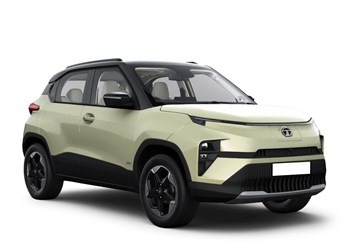
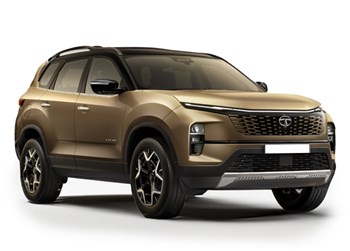
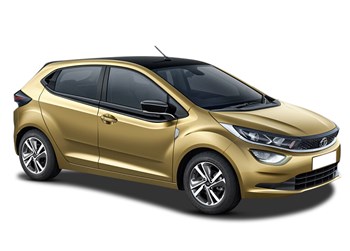
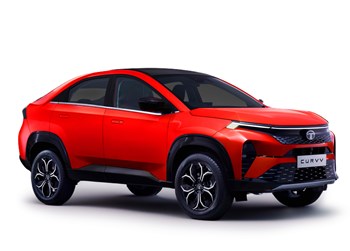
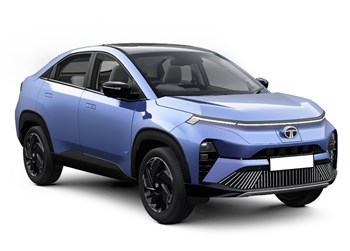
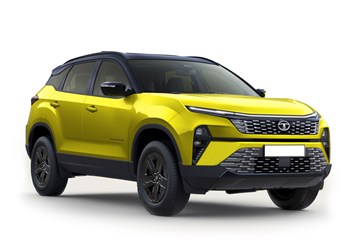


 Price
Price Engine
Engine Body
Body Dimensions
Dimensions
Comments
Member Login
Personal Details
No comments yet. Be the first to comment.